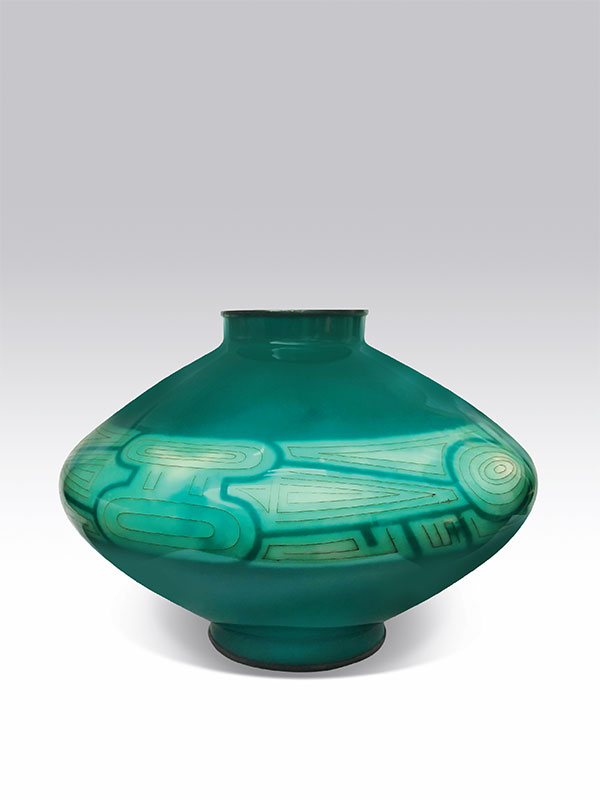Cloisonné enamel vase
Japan, Showa period, 1926-1989
A cloisonné enamel vase of flattened baluster shape, supported on a small foot rim. The side of the vase is decorated with a band of archaistic decoration, forming “taotie” masks in pale green and cream on a dark green ground. The rims at the top and at the bottom are bound in plain silver bands. The base bears the mark of Ando Jubei. The vase is contained within a wooden box.
Ando Jubei was a very successful and prolific Meiji and Showa period cloisonné artist from Nagoya, who dominated the local enamelling industry and lived from 1876-1956. He took part in the Japan-Britain exhibition of 1910 where he exhibited examples of his work. The cloisonné worker and designer Akita Takayu ki together with Ando Jubei developed the technique of applying alumite, an alloy of obsidian, iron and aluminium, to cloisonné, thus creating a warmer feel to the material. They registered this technique as a patent in Showa 12 (1937).


